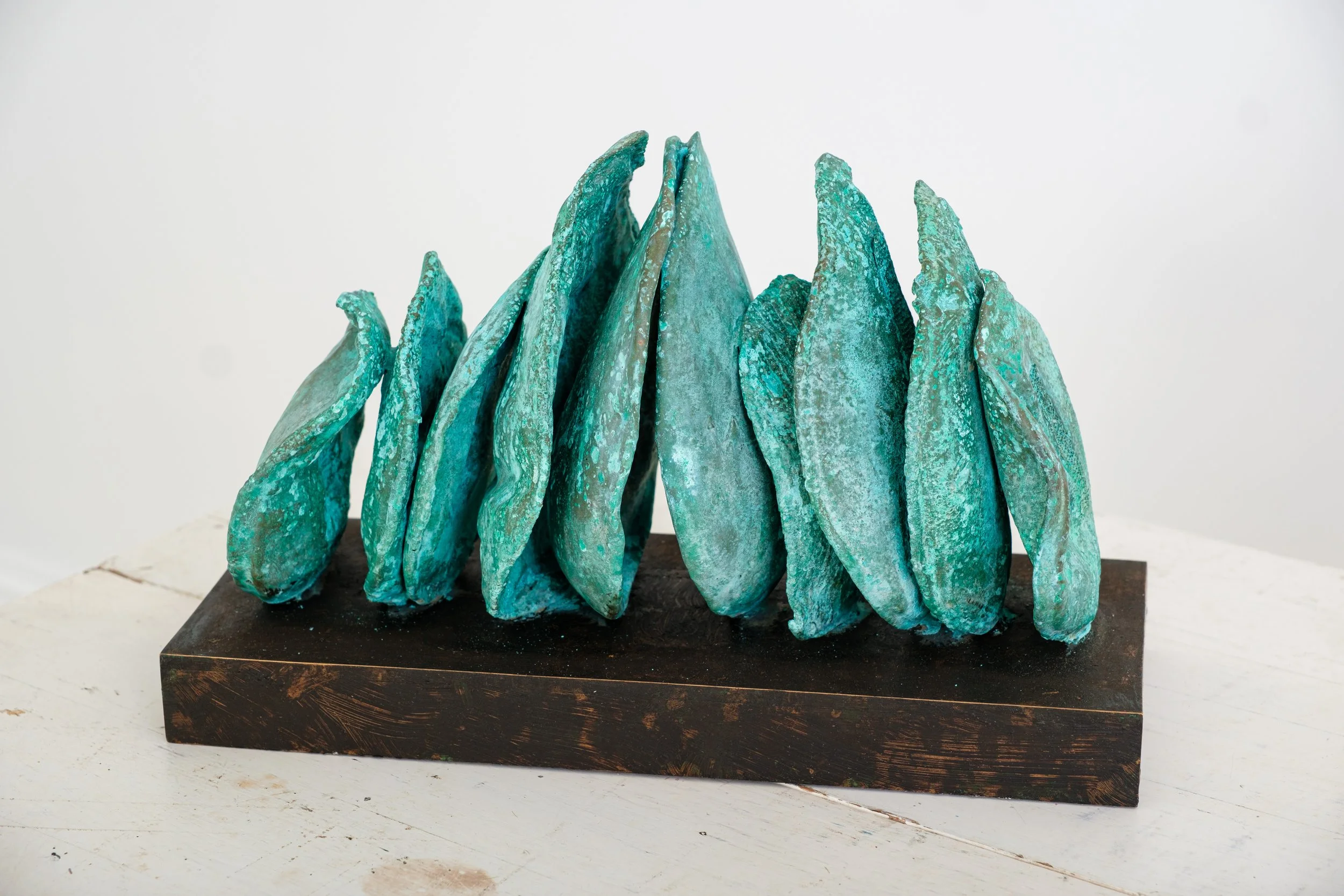Jennifer Odem: Surfacing
September 18, 2025 -- (Extended to) February 6, 2026
511 Gallery is pleased to present Jennifer Odem: Surfacing,
with an artist’s reception from 6 to 8 p.m.
Jennifer Odem, Shrine, 2025, watercolor, pastel, and collage on paper; 65 x 44 inches
511 Gallery is pleased to announce Jennifer Odem: Surfacing, a solo exhibition of new work by the New Orleans sculptor and drawing artist. The exhibition opens on Thursday, September 18th, with an artist’s reception from 6 to 8 p.m.
Situated on the banks of the Mississippi River, bordered on the north by Lake Pontchartrain, the second largest inland saltwater body in the United States, and situated, on average, eight to twelve feet below sea level, New Orleans is a city entirely surrounded by water. The city’s location is precarious, and as a many-generations New Orleans native, Odem has witnessed the changes and, often, devastation wrought on its inhabitants and landscape by extreme events caused by the actions of corporations, government, and nature itself. These changes are extensive and far-reaching. The U.S. Army Corps’s diversion of the Mississippi River in 1963 was one of them. Building a diversion structure, which is the 2 billion-dollar Old River Control Structure, a massive 556-feet-long concrete and steel dam that controls the river’s flow as it moves south to the Gulf of Mexico, the Corps also constructed over 350 miles of levees, complete with floodwalls, gates, and pumps -- a project begun in 1965 and that was still ongoing when, in 2005, the winds, floodwaters, and storm surges caused by Hurricane Katrina caused 50 of the levees to burst, sending billions of gallons of water rushing into the city and leaving 80% of it underwater.
It is the effects of such actions that Odem explores in Jennifer Odem: Surfacing, with serious consideration of alternatives but also with a sense of irony at the hubristic self-confidence of men defying the gods. Paralleling the Army Corps’s efforts have been the attempts of the communities that live on the Batture -- the land in between the low-tide levels of the Mississippi River and the levee -- to acknowledge and understand the risk involved simply by being so close to the source and force that is the Mississippi River. Their physical proximity to, and perpetual awareness of, the river’s natural movements -- its ebbs, rhythms, flooding, and flows -- has allowed the community of the Batture to exist and persist. It is that essence of a careful relationship -- one of observation, nearness, and understanding and respect for a mighty river, that guides Odem’s practice and what she aims to surface in her sculptures, paintings, and drawings.
Shrine, one of eight works on paper, is of a tall, totemic structure of six stacked objects -- looking most like concrete bird baths that owners place on their lawns -- becoming smaller as they rise to the top. This massive steeple is set against a pale blue sky and yellow, earthy ground, and is the only figure in the landscape. No birds are visible, nor is the presence of water in or out of the baths. The barrenness is the challenge of the object created. It stands not as an active religious or spiritual site, and appears to be more a reliquary, a container for the individual and perhaps venerated birdbaths, the true relics from a time when water was plentiful and safe for drinking and bathing.
Jennifer Odem, Aquifer, 2025, cast bronze, bronze; 7 ½ x 11 ½ x 6 inches


